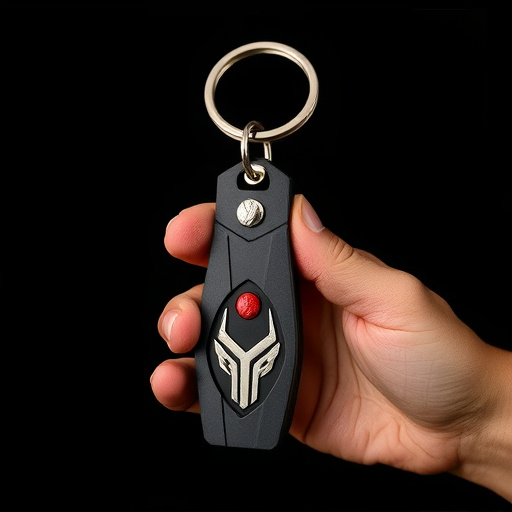When selecting a tactical keychain as a self-defense tool, look for features like sharp blades or reinforced edges, compact design, robust construction, quick blade deployment, smooth operation, and reliable locking mechanisms. These keychains are versatile and discreet, effective against blunt force trauma, and suitable for close-quarters combat scenarios. Proper training, including grip, target acquisition, and understanding blunt force principles, along with regular drills, is essential for confident use in unexpected situations, while also considering legal implications and regional regulations.
In today’s unpredictable world, self-defense is a vital skill. One effective tool gaining traction among everyday carriers is the tactical keychain weapon. This compact device combines convenience and protection, offering a discreet yet potent means of defense against potential threats. Our comprehensive guide delves into the intricate world of tactical keychain weapon techniques, explores key features for optimal choice, and provides practical use cases and training tips to ensure effective deployment in self-defense scenarios.
- Understanding Tactical Keychain Weapon Techniques: A Comprehensive Overview
- Choosing the Right Protection Keychain: Features and Benefits
- Effective Use Cases and Training Tips for Tactical Keychain Self-Defense
Understanding Tactical Keychain Weapon Techniques: A Comprehensive Overview
Choosing the Right Protection Keychain: Features and Benefits
When selecting a protection keychain, especially one designed with tactical applications in mind, it’s crucial to consider the specific features that cater to your needs. A tactical keychain isn’t merely an accessory; it can be a valuable tool for self-defense, offering discreet yet potent options for those in need. Look for keychains equipped with sharp blades or reinforced edges, as these can provide effective blunt force techniques similar to tactical weapons.
The ideal tactical keychain should blend compactness and functionality. It should fit comfortably in your hand and pocket while incorporating robust construction to withstand everyday wear and potential high-stress situations. Additionally, the ability to deploy the blade quickly and quietly is essential, making smooth operation and reliable locking mechanisms key features. Incorporating these elements ensures you’re armed with a versatile tool that combines convenience and self-defense capabilities, all in a discreet keychain form factor.
Effective Use Cases and Training Tips for Tactical Keychain Self-Defense
The tactical keychain, designed with self-defense in mind, offers a compact and discreet way to enhance personal safety. Its effectiveness lies in its versatility; it can be deployed quickly during unexpected attacks, providing users with a powerful tool for defense against blunt force trauma. One of its key use cases is in close-quarters combat scenarios where speed and agility are crucial. For instance, when caught in a tight space or during a surprise assault, the keychain’s sharp edges and durable construction allow for tactical strikes to neutralize an aggressor without requiring extensive training.
Training with a tactical keychain involves learning various techniques that maximize its potential as a self-defense weapon. Key skills include proper grip and control, target acquisition, and understanding the principles of blunt force trauma. Users should practice different strikes and angles to ensure effectiveness during actual encounters. Familiarizing oneself with legal implications and regional regulations regarding self-defense tools is also essential. Regular drills and simulations can help individuals build confidence in their ability to use the keychain effectively, ensuring they are prepared for any unexpected situations that may arise.
The tactical keychain weapon techniques discussed offer a practical and portable self-defense solution. By understanding the various blunt force tips and choosing the right protection keychain, individuals can gain confidence in their ability to defend themselves in unexpected situations. Effective use cases and proper training ensure that this compact tool becomes an invaluable asset for personal safety.
